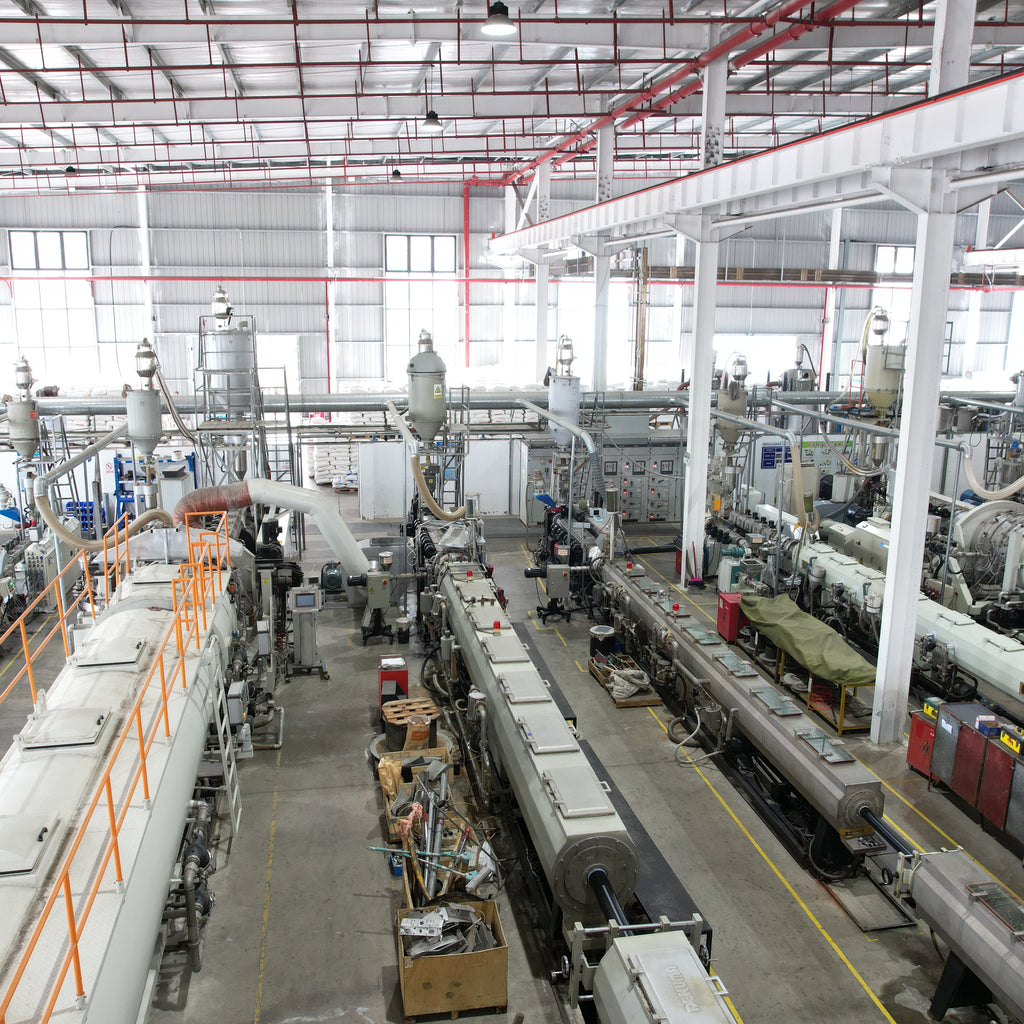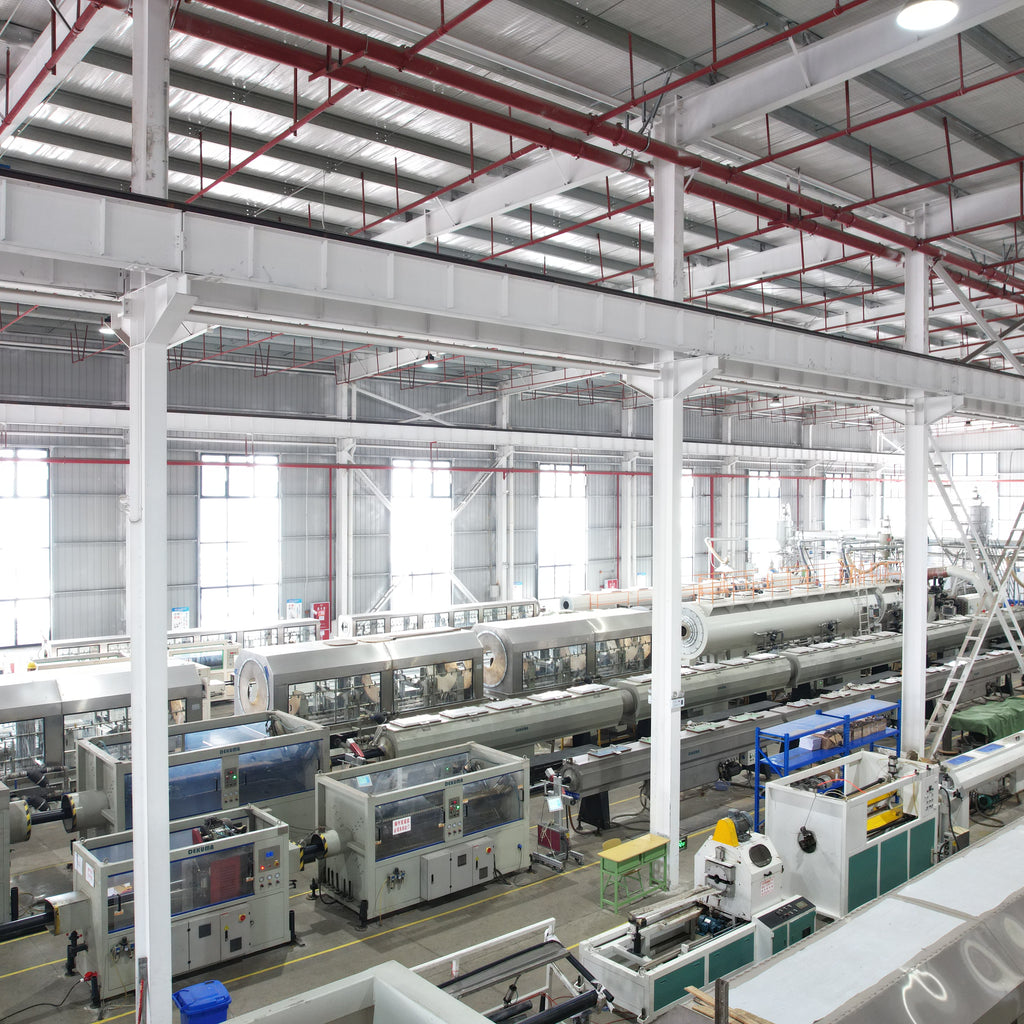UHMWPE Pipes: Advanced Material Properties, Composite Innovations, and Industrial Applications
UHMWPE Pipes: Advanced Material Properties, Composite Innovations, and Industrial Applications
1. Introduction
Ultra-High Molecular Weight Polyethylene (UHMWPE) pipes—defined by a molecular weight of 1.5–15 million g/mol—represent a pinnacle in high-performance fluid and solid conveying technology. Distinguished by their entangled linear polymer chains and near-zero melt flow index, these pipes address the critical limitations of traditional steel, HDPE, and PVC alternatives in abrasive, corrosive, and extreme-temperature environments. Recent advancements in composite structures (e.g., steel-lined UHMWPE) have further expanded their capabilities, enabling high-pressure applications up to 6.4 MPa. Compliant with standards including ASTM D3306 and GB/T 32471, UHMWPE pipes are now the material of choice for industries ranging from mining to cryogenics. This article integrates cutting-edge material science, composite engineering data, and real-world case studies to dissect their technical merits and application breadth.
2. Material Science & Core Performance Advantages
2.1 Unmatched Abrasion Resistance
The dense, entangled molecular structure of UHMWPE delivers industry-leading wear resistance, outperforming conventional materials by significant margins: it is 4–7 times more abrasion-resistant than carbon steel, 10 times that of HDPE, and 27 times superior to brass. In 30% SiO₂泥浆冲刷 tests, UHMWPE pipes exhibited only 6% of the volume loss seen in steel pipes . This durability translates to a service life of 15,000 hours for mineral concentrate transport and up to 50 years in less abrasive applications—dramatically reducing replacement cycles compared to steel pipes (1–2 years) .
2.2 Extreme Impact & Low-Temperature Toughness
UHMWPE pipes boast the highest impact strength among engineering plastics, with a notched Izod impact strength exceeding 110 kJ/m²—10 times that of nylon 66 and 20 times greater than PVC . Uniquely, their toughness enhances in sub-zero conditions: at -269°C (liquid nitrogen temperature), they maintain full impact resistance, while steel and HDPE become brittle . In arctic salt mining operations (-40°C), UHMWPE pipes achieve a low-temperature impact strength of 38–40 KJ/cm² without fracture , outperforming all other thermoplastic pipes.
2.3 Chemical Inertness & Long-Term Stability
The saturated molecular structure of UHMWPE renders it inert to nearly all common corrosive media, including 80% hydrochloric acid, 75% sulfuric acid, and alkali solutions across pH 1–14 . Unlike steel, which requires costly anti-corrosion coatings, UHMWPE pipes eliminate coating maintenance and failure risks. Even after 60 years of service, they retain over 70% of their original mechanical properties . In chemical fertilizer plants, they prevent chloride-induced pitting and fertilizer crystallization buildup that plagues stainless steel, reducing downtime by 90%.
2.4 Low-Friction Efficiency & Anti-Scaling
With a friction coefficient of 0.05–0.08—second only to PTFE and comparable to ice-on-ice contact—UHMWPE pipes minimize flow resistance and energy consumption . This self-lubricating property enables 20% higher conveying efficiency than steel pipes and eliminates scaling, even in high-mineral-content media. In power plant fly ash disposal systems, their non-polar inner surface prevents ash buildup, maintaining consistent flow rates over decades and reducing pump energy use by 15% .
2.5 UHMWPE vs. HDPE: Critical Differences
The performance gap between UHMWPE and HDPE stems from molecular weight, as highlighted in the comparison below :
|
Property
|
UHMWPE Pipe
|
HDPE Pipe
|
|
Molecular Weight
|
1.5–15 million g/mol
|
100–500 thousand g/mol
|
|
Abrasion Resistance
|
4–7x steel
|
1x steel
|
|
Impact Strength (kJ/m²)
|
>110
|
<10
|
|
Friction Coefficient
|
0.05–0.08
|
0.15–0.30
|
|
Service Life (Years)
|
30–50
|
10–15
|
|
Processing Method
|
Plunger extrusion
|
Screw extrusion
|
3. Composite Pipe Innovations: Expanding Performance Limits
3.1 Steel-Lined UHMWPE Composite Pipes
To address UHMWPE’s low rigidity in high-pressure applications, manufacturers have developed steel-lined composite pipes (S/UHMW-PE) that combine the material’s chemical resistance with steel’s structural strength. Key properties include :
- Working Pressure: Up to 6.4 MPa (vs. 2.0 MPa for pure UHMWPE)
- Temperature Range: -40°C to 80°C
- Impact Strength: 38–40 KJ/cm² (low-temperature)
- Weight: 30% lighter than all-steel pipes
These composite pipes eliminate 内衬 creep and external damage risks, making them ideal for long-distance oilfield and mining slurry transport.
3.2 Manufacturing & Connection Technologies
UHMWPE’s ultra-high melt viscosity requires specialized production processes:
- Plunger Extrusion: Creates dense pipes with uniform wall thickness (tolerance ±0.5 mm) for pure UHMWPE variants.
- Sintered Lining: Bonds UHMWPE to steel substrates for composite pipes, ensuring zero delamination .
Connection methods are optimized for reliability:
- Electrofusion: Creates molecular bonds at 200–230°C, with joint strength exceeding the pipe itself.
- Flange Connections: Used for composite pipes, supporting high-pressure applications up to 5 MPa .
4. Key Application Domains & Case Studies
4.1 Mining & Mineral Processing
UHMWPE pipes dominate abrasive slurry transport:
- Iron Ore Mines: Transported ore slurries with 30% solids content, extending service life from 1–2 years (steel) to 4 years, and cutting annual maintenance costs by $80,000 .
- Coal Washing Plants: Handled flotation slurries and heavy media suspensions, reducing pump energy use by 18% vs. rubber-lined steel pipes .
4.2 Chemical & Petrochemical Industry
Corrosion resistance drives adoption in harsh environments:
- Fertilizer Plants: Conveyed 30% H₂SO₄ without corrosion, eliminating monthly steel pipe replacements .
- Oil & Gas: Steel-lined UHMWPE pipes transported drilling mud at 5 MPa pressure, with anti-scaling properties improving flow efficiency by 25% .
4.3 Salt & Cryogenic Applications
The material’s extreme low-temperature tolerance enables unique use cases:
- Sea Salt Mining: In northern Chinese salt fields (-20°C), UHMWPE pipes replaced asbestos cement pipes, extending service life from 1–3 years to 15 years .
- Cryogenics: Used for liquid nitrogen transport (-196°C) in research facilities, maintaining structural integrity without insulation upgrades .
4.4 Water & Wastewater Treatment
Sanitary and anti-fouling properties suit municipal systems:
- Sludge Transport: Non-stick surface prevented biological fouling, reducing cleaning frequency from monthly to annually .
- Desalination: Withstood seawater corrosion, outperforming stainless steel at 40% lower cost .
5. Economic Value & Sustainability
5.1 Total Cost of Ownership (TCO) Analysis
While UHMWPE pipes have 1.5–2x higher initial cost than steel, their 50-year TCO is 6x lower:
|
Cost Factor
|
UHMWPE Pipe
|
Steel Pipe
|
|
Initial Cost ($/m)
|
\(80–\)150
|
\(40–\)80
|
|
Annual Maintenance Cost
|
\(5–\)10
|
\(50–\)80
|
|
Service Life (Years)
|
50
|
15
|
|
50-Year TCO ($/m)
|
\(105–\)200
|
\(690–\)1,000
|
5.2 Environmental Impact
- Energy Efficiency: Low friction reduces pump energy use by 15–20%, cutting carbon emissions.
- Waste Reduction: 50-year lifespan reduces plastic waste by 75% vs. HDPE pipes.
- Transport Emissions: 1/8 the weight of steel reduces transportation-related CO₂ by 67% .
6. Conclusion & Future Trends
UHMWPE pipes—especially composite variants—represent a paradigm shift in high-performance conveying, offering unmatched durability, efficiency, and cost-effectiveness across extreme environments. Their ability to replace steel in abrasive and corrosive 工况 aligns with global "plastic-to-steel" sustainability goals. Emerging advancements, including reinforced high-temperature grades (up to 135°C) and recycled UHMWPE formulations, will expand applications into renewable energy (biomass transport) and aerospace.
For engineers specifying piping systems, partnering with manufacturers offering custom composite designs (e.g., high-pressure steel-lined) will unlock the full potential of this transformative material. To explore tailored solutions for your project—whether high-pressure mining slurry or cryogenic fluid transport—share your media, temperature, and pressure requirements for detailed technical recommendations.
Sample Block Quote
Nam tempus turpis at metus scelerisque placerat nulla deumantos sollicitudin delos felis. Pellentesque diam dolor an elementum et lobortis at mollis ut risus. Curabitur semper sagittis mino de condimentum.
Sample Paragraph Text
Lorem ipsum dolor sit amet, consectetur adipiscing elit. Morbi ut blandit risus. Donec mollis nec tellus et rutrum. Orci varius natoque de penatibus et magnis dis parturient montes, nascetur ridiculus mus. Ut consequat quam a purus faucibus scelerisque. Mauris ac dui ante. Pellentesque congue porttitor tempus. Donec sodales dapibus urna sed dictum.



